Ants, those tiny creatures that scurry around our homes and gardens, are far more intriguing than one might think. They belong to the insect order Hymenoptera along with bees and wasps, forming one of the most successful groups of organisms on Earth. With over 12,000 known species across the globe, ants have established themselves as masters of survival and social organization.
Their colonies can consist of millions of individuals working tirelessly together towards a common goal. Ants display an astonishing array of behaviors and adaptations that have captivated scientists and nature enthusiasts alike.
From their intricate communication systems using pheromones to their sophisticated division of labor within colonies, ants have developed complex societies that rival some human communities in terms of efficiency. Whether it’s the leaf-cutters tending to their fungal gardens or the army ants marching in unison to gather food, observing these six-legged marvels reveals a world teeming with wonder.
Curiosity about Ant Wings
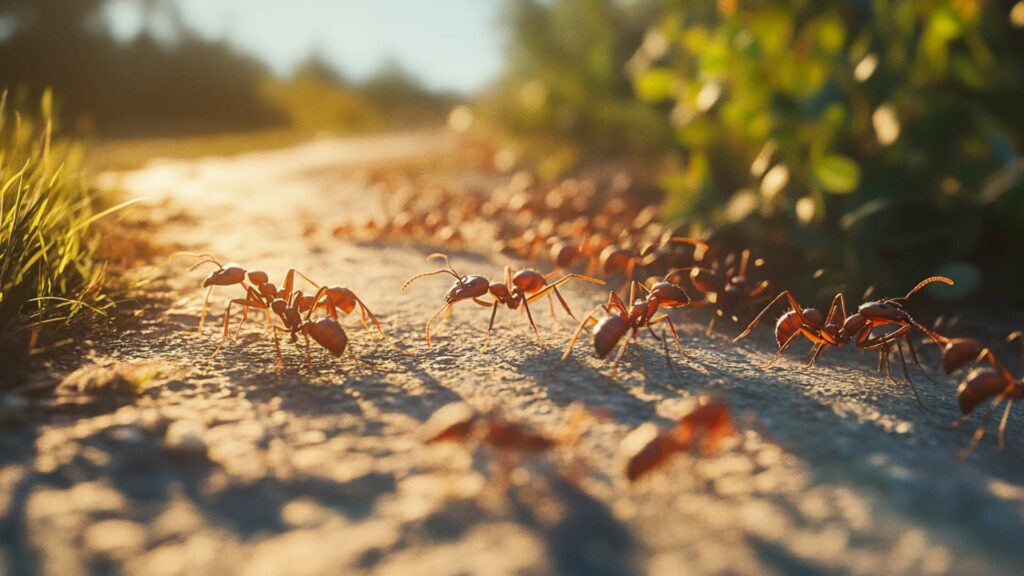
Within this fascinating world lies a particular curiosity about ant wings. While we may be familiar with winged insects like butterflies or dragonflies, many wonder if ants too possess this feature. After all, we often encounter wingless worker ants diligently going about their tasks, but what about those winged counterparts?
Are they a different species? Do carpenter ants have wings?
These questions stir our intrigue and lead us into a journey through the secret lives of these industrious insects. The presence or absence of wings in ants is not arbitrary; it plays a vital role in their life cycle and colony dynamics.
Understanding why some ants grow wings while others remain wingless reveals insights into reproduction strategies and social structures within ant societies. So let us embark on this exploration together as we uncover the truth behind common ant species’ wings and shed light on whether carpenter ants are among those that take flight or if they remain firmly rooted in the ground.
Prepare to be amazed by the intricate world of ants and their remarkable adaptations. Get ready to discover what lies beneath those tiny exoskeletons and marvel at the wonders of nature’s tiniest aviators.
Understanding Ants
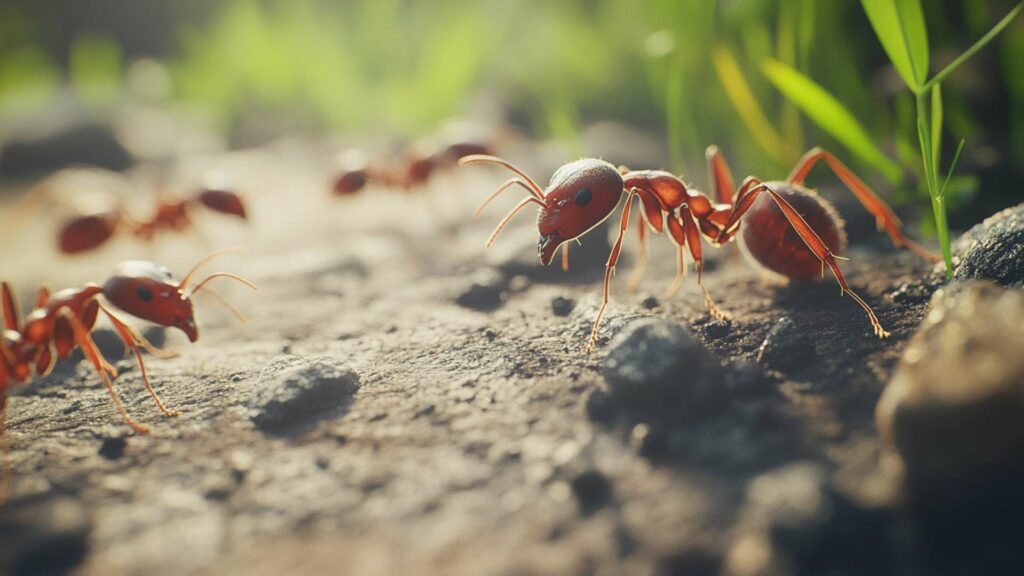
Social Insects with Complex Societies
Ants, fascinating creatures of the insect world, are known for their highly organized and complex societies. They are social insects that live in colonies, where each member has a specific role to play. These colonies can vary in size, ranging from just a few individuals to massive networks consisting of millions of ants.
The structure and organization within an ant colony are truly remarkable. Within an ant colony, different castes exist, each with its own set of responsibilities.
The most commonly recognized castes are the workers, soldiers, and reproductive members. Workers make up the majority of the colony and perform various tasks such as foraging for food, caring for the young (larvae), maintaining the nest structure, and defending against intruders.
Soldier ants have specialized features like larger heads or mandibles that allow them to protect the colony from threats. Reproductive members include both male and sterile workers and female ants responsible for mating and propagating new colonies.
Different Ant Castes and Their Roles
In most species of ants, including carpenter ants (which we’ll delve into later), worker ants are wingless females tasked with numerous duties essential for colony survival. They exhibit great adaptability to different environments by having distinct physical characteristics aimed at fulfilling their roles efficiently. Commonly characterized by their small size compared to other castes within a colony, worker ants have strong mandibles perfect for excavating tunnels or carrying food back to the nest.
On the other hand, soldier ants possess larger bodies and sometimes sport formidable-looking jaws or stingers necessary for defending their territory against potential threats like predators or rival ant colonies. Interestingly enough, these soldiers often lack wings as well.
Reproductive members play a crucial role in expanding ant populations by engaging in mating flights or nuptial swarms where male winged ants, also known as drones, find and mate with virgin females known as queens. These mating flights typically occur during specific times of the year and are facilitated by environmental cues such as temperature changes or rainfall.
After mating, the male winged ants die, while the impregnated queen finds a suitable spot to establish a new colony. Ants possess intricate societies with different castes that work together harmoniously to ensure colony survival.
Worker ants handle various tasks essential for day-to-day operations, soldier ants protect the colony from potential threats, and reproductive members propagate new colonies through unique mating behaviors. Understanding these castes and their roles helps us appreciate the complexity and efficiency within an ant society.
Wings in the Ant World
Winged and Wingless Ants: Two Distinct Forms
In the fascinating world of ants, one can observe a remarkable diversity of species, each with its own unique characteristics and adaptations. One noticeable distinction among ants is the presence or absence of wings.
In fact, there are two distinct forms: winged ants, also known as alates or reproductive ants, and wingless ants, which include the majority of individuals in an ant colony. The most common sight when it comes to winged ants is during mating flights.
These flying ants are usually female ants or virgin queens seeking to establish a new colony. They have larger bodies compared to their worker counterparts and possess both a pair of small hind wings and well-developed forewings.
The wings themselves serve as crucial tools for dispersal, allowing these reproductive individuals to travel far from their parent colony in search of suitable areas to start anew. On the other hand, worker ants within a colony are typically wingless.
They are smaller in size compared to alates and possess straight antennae instead of elbowed ones like some other species of flying insects. Worker ants play various vital roles within their colonies such as foraging for food, caring for young larvae, building and maintaining nests, and defending their territory.
Importance of Wings in Ant Life Cycle
The presence or absence of wings is closely tied to the life cycle of an ant. For species that produce winged individuals like alates, their development involves going through several stages before reaching adulthood.
It begins with eggs laid by the queen which hatch into larvae—small grub-like creatures that rely on being fed by worker ants. Once they mature enough, these larvae undergo pupation where they transform into pupae inside protective cocoons.
During this stage, significant changes occur within them until they eventually emerge as fully formed adult ants. At this point, the newly emerged individuals are still winged and need time for their exoskeletons to harden and their wings to expand before they can fly.
The ability to fly is of great importance for winged ants during these early stages of their lives. It allows them to disperse effectively, searching for mates from other colonies and establishing new ones.
The huge swarms of flying ants that we often witness in early summer are a remarkable example of this life cycle phenomenon. However, it’s important to note that not all species of ants have wings.
Some, like fire ants, only produce winged individuals during specific periods or under certain conditions. The presence or absence of wings in ants is not arbitrary but rather a critical aspect of their life cycle and colony dynamics.
Winged alates play a vital role in reproduction and dispersal, while wingless worker ants are responsible for maintaining the colony’s day-to-day activities. Understanding these distinctions helps shed light on the incredible diversity and complexity found within the world of ants.
Carpenter Ants: Winged or Wingless?
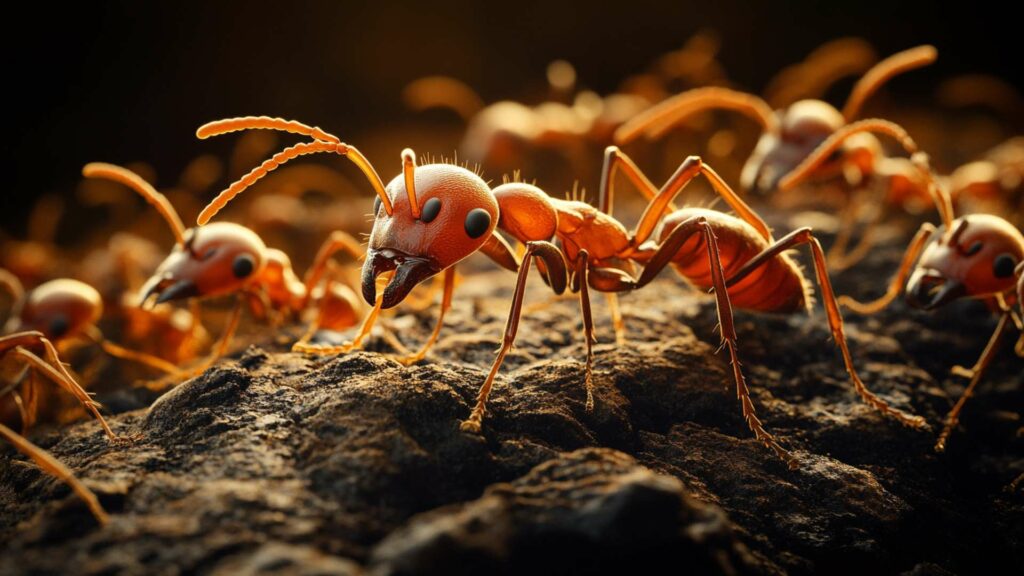
Overview of Carpenter Ants’ Characteristics
Carpenter ants (Camponotus spp.) are fascinating creatures known for their ability to cause significant damage to wooden structures. These ants belong to the genus Camponotus, which includes numerous species of other ants found worldwide. They are larger ants, with some reaching up to an inch in length.
Carpenter ants have a robust build and are usually black or reddish-black in color. One distinguishing feature of carpenter ants is their well-defined body segments.
They have a narrow waist, known as a petiole, that separates their thorax from the abdomen. Unlike other ants and termites, however, carpenter ants do not eat wood; instead, they excavate it to create galleries and tunnels where they establish their nests.
The Presence of Wings in Carpenter Ants
When it comes to the presence of wings in carpenter ants, there is an intriguing dichotomy between worker ants and the reproductive members such as when ants swarm the colony. Worker carpenter ants are wingless and make up the majority of individuals within a nest.
They tirelessly labor to expand the nest, forage for food, care for larvae, and defend against intruders. On the other hand, there are winged carpenter ants known as alates.
Alates serve as reproductive members responsible for initiating new colonies. These female winged ants can sometimes be mistaken for large wasps due to their size and appearance.
However, upon closer inspection, one can observe distinct differences between them. While worker carpenter ants possess no wings at all, alates boast a pair of prominent wings that extend beyond their abdomen when at rest.
The presence of wings allows these female winged ants to embark on mating flights during specific times of the year when conditions are favorable. ,
carpenter ant colonies consist of both winged reproductive ants (alates) and wingless worker ants. The worker ants are responsible for all the daily tasks essential for the survival and growth of the colony.
Alates, on the other hand, play a crucial role in establishing new nests by mating and initiating satellite colonies. Their ability to fly gives them an advantage in dispersing and finding suitable locations to start a fresh nest.
It is fascinating, why do ants have wings do carpenter ants have wings do ant societies function with such distinct castes and unique characteristics? Understanding these differences between winged and wingless carpenter ants provides us with insight into their complex social structure and life cycle dynamics.
The Life Cycle of Carpenter Ants
Stages from egg to adult ant
Carpenter ants, like many other ant species, go through a fascinating life cycle that encompasses various stages of development. These stages are crucial for the survival and growth of the colony. Let’s delve into each stage and explore the remarkable transformations that carpenter ants undergo.
Eggs and larvae

The life cycle of carpenter ants begins with the laying of eggs by the queen. These tiny, oval-shaped eggs are carefully tended to by worker ants within the protective walls of their colony.
As time passes, these eggs hatch into larvae, which resemble small, worm-like creatures. The larvae are entirely dependent on their fellow workers for sustenance.
They are fed with a mixture of regurgitated food and secretions rich in proteins and nutrients. This diet helps them grow rapidly as they molt through several larval instars.
Pupae development
Following their larval stage, carpenter ant pupae emerge. The pupae appear motionless and cocoon-like, similar to butterfly or moth pupae. Inside these protective casings, astounding transformations occur as the pupae develop into fully formed adult ants.
During this stage, significant physiological changes take place within the pupal body structure. Their legs elongate, antennae grow longer, and wings (if they possess them) develop further in preparation for adulthood.
Adult emergence
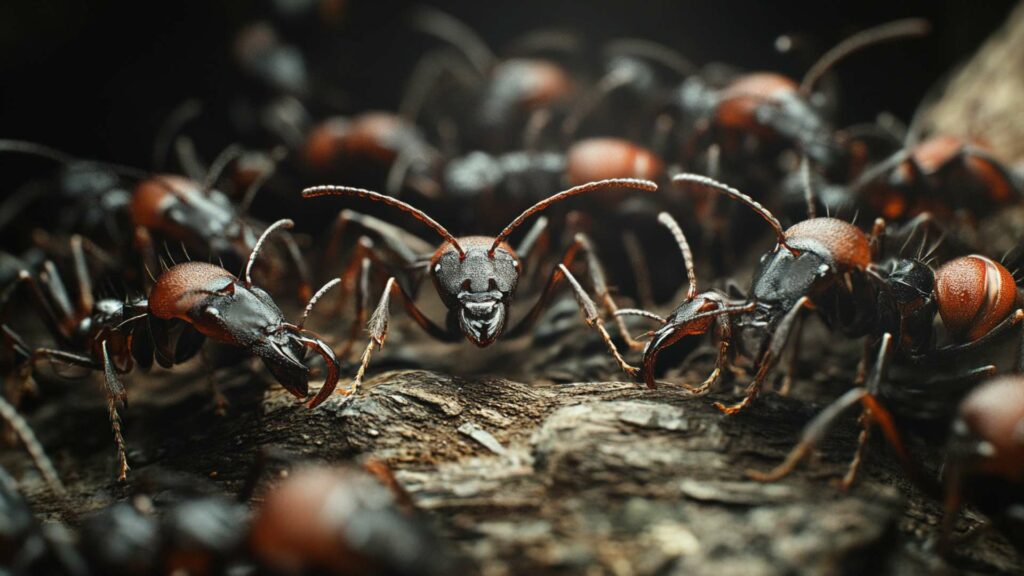
After a period inside the cocoon-like pupal casing, adult carpenter ants emerge from their transformative slumber. At this point in their life cycle, some individuals will have developed wings while others will not. These newly emerged adults have soft exoskeletons initially but soon harden as they come into contact with air and solid surfaces outside their cocoon.
Once fully hardened, they are capable of participating in various colony activities, depending on their particular caste and role. It’s important to note that not all carpenter ants have wings.
Only ants of a specific caste within the species, known as the alates or reproductive males and females, develop wings. The rest of the colony consists of wingless worker ants who tirelessly contribute to the survival and prosperity of their entire community.
Understanding the different stages of an ant’s life cycle provides us with valuable insights into their behavior and inherent characteristics. In the next section, we will explore in detail whether carpenter ants belong to the group of winged insects or if they fall into a different category altogether.
Winged Carpenter Ants: Alates
Alates as reproductive members of the colony
Carpenter ants, like many other species of ants, have a special caste known as alates that are responsible for reproduction within the colony. Alates are winged ants, distinctively different from the wingless worker ants that form the majority of the colony. These reproductive ants play a crucial role in ensuring the survival and expansion of their species.
Mating flights for reproduction
During specific times, often referred to as “flying ant day,” which usually occurs in late spring or early summer depending on the local climate and species of ants, carpenter ant colonies release alates for mating flights. Mating flights are a remarkable event where virgin queens and male drones take to the skies to find mates from other colonies. As these winged ants take flight, they engage in an elaborate courtship dance high above the ground.
The males release pheromones to attract females from neighboring colonies while flying around in search of potential mates. Once a successful pairing occurs between male and female alates, they mate mid-air.
Nuptial swarms and dispersal
After successful mating takes place during these airborne encounters, the fertilized females (future queens) break off from their male partners. The mated queens shed their wings shortly after this breakup. They then embark on a solitary journey to establish new colonies elsewhere.
This dispersal phase is crucial for expanding their population since they establish completely new nests rather than colonizing existing ones. The mated queens carefully select suitable locations for nest building and lay their first batch of eggs to kickstart their own independent colonies.
It’s worth noting that discarded wings found indoors can be an indication of an ant infestation somewhere nearby since these winged ants often venture into human structures by accident during their mating flights. If you discover discarded wings or suspect carpenter ant activity, it is advisable to contact a professional pest control service promptly.
These experts can assess the situation, and locate and eliminate nests, preventing potential significant damage caused by carpenter ants. In the next section, we delve deeper into the differences between winged carpenter ants and their worker counterparts, exploring their appearances and behavior within the colony.
Winged Carpenter Ants vs Worker Carpenter Ants
Differences between alates and workers in appearance and behavior
When observing carpenter ants, you may come across two distinct groups most ants: the winged carpenter ants, also known as alates, and the worker carpenter ants. The differences between the two go beyond mere presence or absence of wings.
In terms of appearance, alates have a more robust build compared to their worker counterparts. They possess longer bodies and larger heads.
Additionally, their antennae are bent or elbowed, while worker ants typically have straight antennae. One of the most noticeable distinctions lies in their wings.
Alates have two pairs of wings that are not equal in length: the front pair being longer than the hind pair. On workers, however, you won’t find any wings of the same species at all.
The wings serve an important purpose for alates during their reproductive phase. In terms of behavior, the winged males of carpenter ants have a specific role within the colony: reproduction.
Female winged ants are responsible for leaving their nests during mating flights to find suitable partners from different colonies—ensuring genetic diversity within their species. Once mating occurs successfully, these females shed their wings and become queen ants in new colonies.
The role of workers in the colony

While reproductive ants focus on expanding and establishing new colonies, worker carpenter ants bear tremendous responsibilities within existing ant colonies. Workers are diligent gatherers of food for the entire colony. They use their strong mandibles to obtain nourishment by cutting through wood or collecting other organic matter.
Apart from gathering food, worker carpenter ants play various roles that contribute to the overall functioning and survival of the colony. They construct intricate tunnels and galleries within wood structures that serve as both nest chambers for larvae development and highways for efficient movement throughout the colony.
Worker carpenter ants also aid in maintaining the hygiene of the colony. They remove waste and dead ants, ensuring a clean and healthy environment for their siblings.
In times of danger or intrusion, these workers also act as defenders, utilizing their strong jaws and chemical communication to protect the colony from predators or rival ant colonies. Furthermore, foraging worker ants and carpenter ants exhibit complex social behaviors within their colony.
They communicate through chemical signals called pheromones, allowing them to coordinate tasks effectively. Each worker knows its specific role—whether it is caring for the brood, expanding the nest, or foraging for food—ensuring optimal efficiency within their highly organized society.
While winged carpenter ants (alates) primarily focus on reproduction and establishing new colonies through mating flights, worker carpenter ants play an integral role in maintaining existing ant colonies. The distinct differences between alates and workers in appearance and behavior highlight the specialized functions that each group fulfills within the intricate social structure of these fascinating insects.
Why Do Some Carpenter Ants Have Wings?
Advantages and Purposes of Having Wings for Carpenter Ants
Carpenter ants are fascinating creatures, known for their ability to construct elaborate nests within wood. Unlike termites, carpenter ants do not eat wood but excavate it to create galleries for their colonies. Within these colonies, there are distinct castes of ants with different roles, including winged individuals known as alates.
The presence of wings in some carpenter ants serves various advantages and purposes within their complex lives. Firstly, the main advantage of having wings is dispersal.
Winged carpenter ants play a crucial role in the reproduction process by participating in mating flights. These flights occur when young queens and males take to the air in search of a suitable mate from another colony.
By flying away from their birth colony, they reduce the risk of interbreeding and increase genetic diversity within new colonies that will be established. Secondly, winged carpenter ants serve as pioneers for establishing new nests.
Once mated, female winged ants shed their wings and become fertile queens. They then search for suitable locations to create new colonies.
The ability to fly allows them to explore larger areas efficiently and find optimal environments with ample resources for their future offspring. Furthermore, the presence of wings also helps protect wingless worker ants who remain within the established colony.
In times of danger or when resources become scarce, winged insects can leave the nest in search of alternative options without putting worker ants at risk. This division of labor ensures the survival and stability of both existing and potential colonies.
Disadvantages or Limitations Associated with Winged Carpenter Ants
While having wings provides advantages for carpenter ants, there are also limitations associated with being a winged insect within this species. One significant disadvantage is that female winged ants have a limited lifespan. After the mating flight, the majority of male winged ants die.
Once they have successfully mated, female winged ants shed their wings and become new queens. However, even as queens, their lifespan is relatively short compared to worker ants within the colony.
This limited lifespan restricts their ability to contribute directly to the growth and maintenance of the colony. Another limitation is the vulnerability of winged carpenter ants during mating flights.
As they take to the air in search of potential mates, they become exposed to various risks such as predation by birds, spiders, and other insects. The survival rate for these swarming ants is relatively low due to these natural hazards and environmental factors.
Additionally, once a suitable mate is found and mating occurs, female winged ants must go through a process of finding a suitable location for a new nest. This journey can be physically demanding and fraught with dangers such as adverse weather conditions or encounters with predators during flight.
Having wings provides advantages for carpenter ants such as dispersal to establish new colonies and exploring larger areas efficiently. It also serves as a protective measure for existing colonies by allowing winged individuals to search for resources or alternative nesting sites if needed.
However, being a winged carpenter ant comes with limitations such as limited lifespan for males and females after mating flights and vulnerability during these flights due to various natural hazards. Despite these limitations, carpenter ants have evolved mechanisms that allow them to thrive in intricate social structures where both the winged members and non-winged individuals play critical roles in maintaining the strength and sustainability of their colonies.
Carpenter Ant Colonies without Wings: Primary vs Satellite colonies
Primary colonies as main nests with wingless worker ants
In the intricate world of carpenter ants, there exists a fascinating dichotomy between primary and satellite colonies. Primary colonies are the main nests where the heart of the carpenter ant society resides. These colonies typically consist of large numbers of wingless worker ants diligently tending to their duties.
These tenacious workers, often spotted foraging in search of food, play a crucial role in sustaining and expanding their colony. Unlike their winged counterparts, these industrious worker ants possess straight antennae that help them navigate through narrow tunnels and crevices within wooden structures.
In size, they may vary from a quarter inch to half an inch, making them larger than other typical ant species. They dedicate themselves to maintenance tasks such as excavating galleries in wood, taking care of the young larvae and pupae, and gathering food resources for the entire colony.
Satellite colonies as secondary nests with worker ants only
Satellite colonies serve as secondary nests connected to primary colonies through intricate tunnel systems. While primary colonies house both reproductive male and female winged ants during mating season, satellite colonies primarily consist of worker ants alone.
This arrangement allows for increased efficiency in resource allocation and population distribution within the carpenter ant society. These satellite colonies operate with smaller populations compared to primary ones but still house numerous bent-antennae workers responsible for various essential tasks within their respective territories.
These dutiful workers tirelessly maintain existing tunnels and construct new passageways while ensuring that all aspects of colony life run smoothly. The division between primary and satellite colonies creates a decentralized system that enhances the survival chances for entire carpenter ant communities.
The presence of multiple interconnected nests provides backup options if disturbances or environmental changes compromise any individual nest’s integrity. Primary colonies act as the main nests for carpenter ants, housing the majority of the wingless worker ants that tirelessly carry out essential colony functions.
On the other hand, satellite colonies serve as secondary nests with an exclusive focus on worker ants, allowing for increased efficiency and adaptability within the ant society’s structure. This division ensures the overall resilience of carpenter ant populations in navigating their intricate world and thriving in various environments.
Interesting Facts about Carpenter Ant Wings
Astounding Adaptations: The Marvel of Carpenter Ant Wings
Carpenter ant wings, like those of other winged ant species, possess unique features and adaptations that contribute to their remarkable abilities. One striking characteristic is their veined structure, which provides strength and support during flight.
These intricate networks of veins enable carpenter ants with wings to navigate through the air swiftly and efficiently. Additionally, the wings are transparent or translucent, allowing light to pass through them—an aesthetic marvel in itself.
The Case of Dimorphic Wings: Males vs. Females
Interestingly, there is a distinct difference between the wings of male and female carpenter ants. The male ants’ wings are longer than their body length and typically have a more uniform shape. On the other hand, female carpenter ants (also known as queens) have shorter wings that extend just slightly beyond the tip of their abdomen. This dimorphic wing structure helps in distinguishing between males and females during nuptial flights when they partake in mating rituals.
Wing Shedding: A Peculiar Phenomenon
One fascinating adaptation related to carpenter ant wings is the ability to shed them after establishing a new colony or nest site. During this process, known as “wing shedding” or “de-alation,” newly mated queen ants discard their wings shortly after mating and finding a suitable nesting location for future generations. This unique behavior ensures that queens can focus solely on nurturing their developing colony without hindrance from flight appendages.
The Silent Flutterers: Stealthy Flight Patterns
Unlike other flying insects that produce audible buzzing sounds during flight, carpenter ants fly silently—almost stealthily—through the air. Their delicate yet effective wing design allows them to maneuver without creating any noticeable noise disturbances. This silent fluttering grants them an advantage in avoiding predators and maintaining their secretive existence within the depths of their chosen habitats.
Conclusion
As we delve into the world of carpenter ants and their wings, we uncover a wealth of fascinating facts. From their intricate vein structure and transparent wings to the dimorphic wing variations between males and females, these remarkable adaptations showcase the incredible diversity that exists within the world of ants. Moreover, the ability to shed their wings after colony establishment and their stealthy flight patterns add further intrigue to these tiny yet resilient insects.
So, next time you encounter a flying ant day or witness swarms of male winged ants searching for virgin queens during their nuptial flight, take a moment to appreciate the beauty and ingenuity inherent in carpenter ant wings. After all, even in the smallest creatures, there lies untold wonder waiting to be explored.
Prevent Ant Infestations with D-Termination: The Top Pest Control Service in Las Vegas!
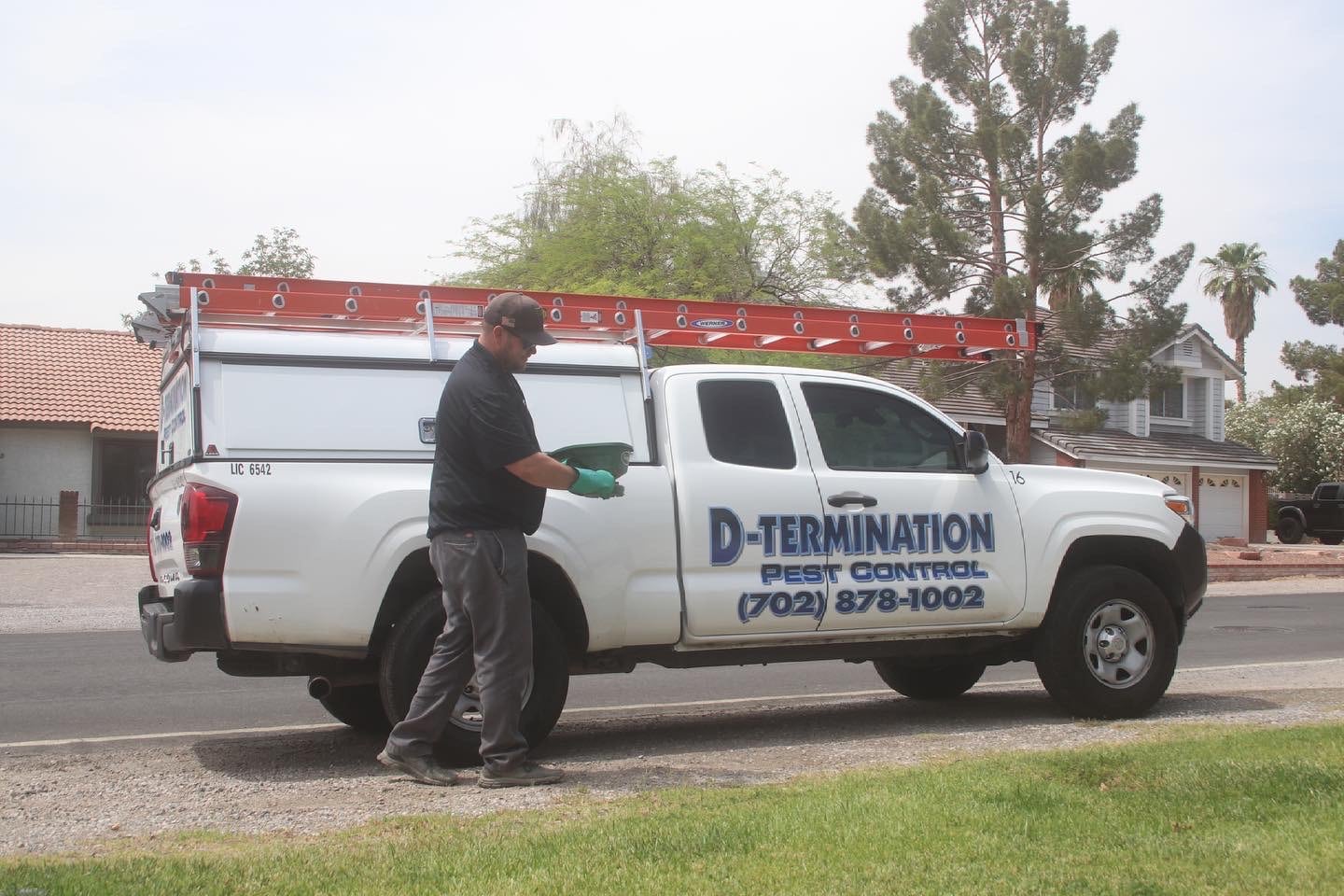
If you’re dealing with ant problems, D-Termination is your solution. Our skilled team excels at deterring ants, rejuvenating cleanliness, and maintaining the integrity of your space. Bid farewell to ants—select D-Termination for highly effective pest control today!
Reach out to us at 702-919-6310 or visit dtermination.com to schedule your ant control service and take back your space from these unwanted pests.
Frequently Asked Questions:
Winged ants are not necessarily carpenter ants; they can be from various ant species.
Carpenter ants typically have one pair of wings on their thorax.
Flying carpenter ants resemble large black ants with wings.
To get rid of winged carpenter ants, locate the nest, use baits, or consult a pest professional for help.







